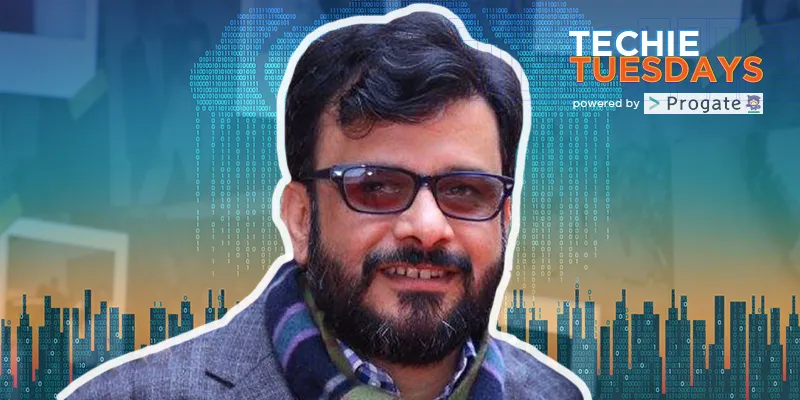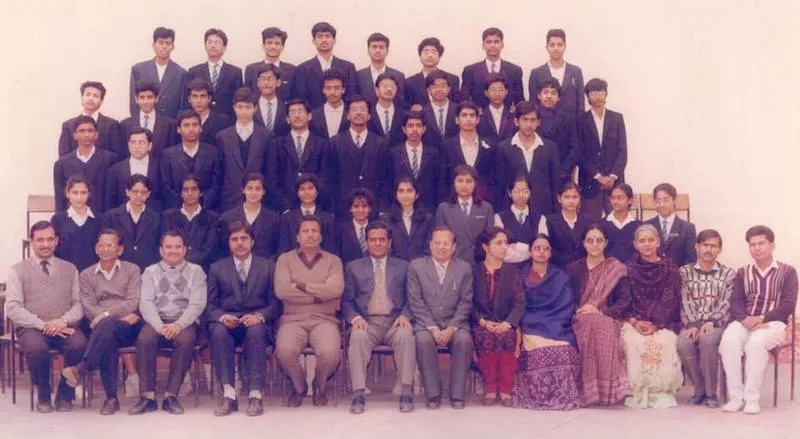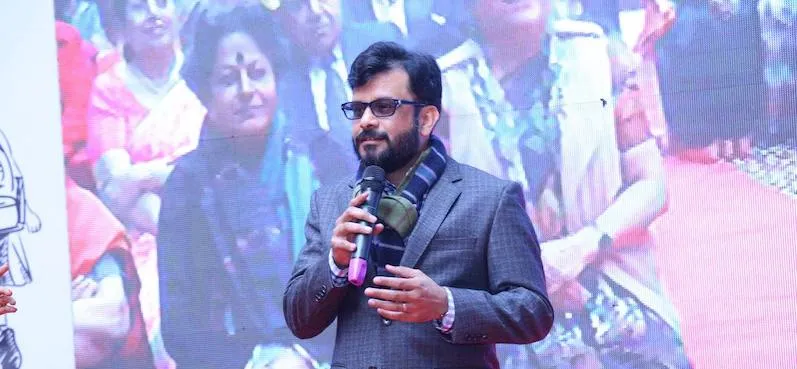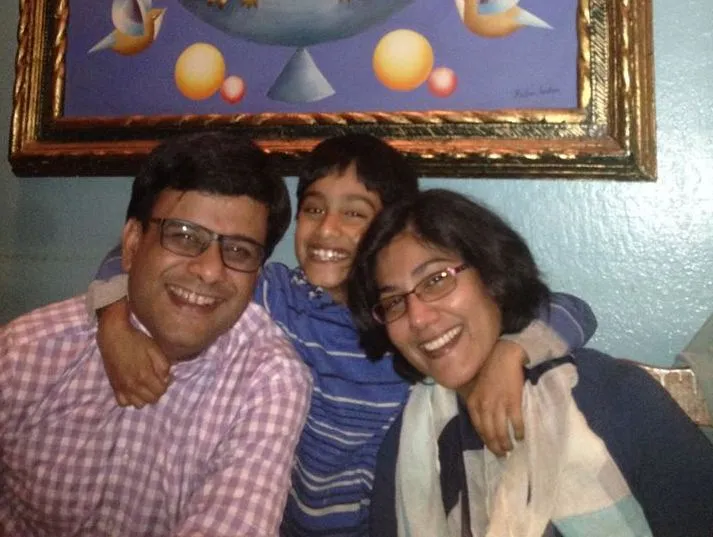Will over skill -- story of Vivek Vaidya and his $700 M startup exit
Vivek Vaidya is the CTO and Co-founder of the data management platform Krux Digital, which was acquired by Salesforce for a whopping $700 million in Oct 2016. He’s currently the SVP Engineering and CTO, Salesforce Marketing Cloud at Salesforce.
I look for will over skill. I care more about the person's thought process and their approach towards problem solving as opposed to them actually solving the problem. Do you have gumption, fire in the belly, and the desire to solve the problem?
This is how Vivek Vaidya hires and pretty much how he himself is wired. Vivek is the CTO of Salesforce Marketing Cloud leading a team of ~800 engineers. He took up this position after his previous data management platform company Krux Digital was acquired by Salesforce in Oct 2016 for $700 million.
An IIT Delhi and University of Denver alumnus, Vivek is our Techie Tuesdays’ star for the week. Here’s his journey of building companies and a look at what makes him run.

“I would like you to become an engineer”
Vivek was born and raised in New Delhi. His family roots can be traced to Jabalpur, Amravati, and Udaipur. His mother has a master’s degree in Botany and father has an MA in Political Science. Growing up, Vivek had no inclination towards technology or engineering. It was a typical Indian middle-class family where it was all about getting good grades first. He recalls,
“I started having the conversation about what will I become with my grandmother and she said – ‘I would like you to become an engineer’. So, I went that way and became serious about it."
Vivek was close to his paternal grandmother and maternal grandfather and even wrote letters to them at the end of every exam.
When he reached Class VI, his school got eight BBC microcomputers and in next three years, his interest grew significantly in computers. He opted for Computer Science (along with Math-Science in Class XI). Vivek came to know about IITs the same year but it was something his Maths teacher said which stuck with him and made him prepare for the IIT entrance examination – “You guys are smart and you'll realise this later. If you invest six months of your life in preparing for your future, it'll reap dividends later.”

Around the same time, in 1990, Mandal Commission protests took place and Vivek’s school got shut for a couple of months. In this time, Vivek pondered over what his Maths teacher had said and started preparing for the IIT entrance examination. He also wanted to sit for the NDA examination but when there was clash between the NDA and IIT Delhi exam, he chose the latter. He says, “I can trace back who I am to those three things:
- The choice I made to take the IIT-JEE exam.
- The thing my teacher said – invest six months of your life to reap benefits for lifetime.
- My grandmother's desire to see me as engineer.”
Before joining IIT, Vivek was taught BASIC and PASCAL in school and his high school project was to build a full telephone directory.
Also read - Who’s Bretwood Higman and how can he save the world from next tsunami
The life-changing internship
At IIT, Vivek became a part of sports, drama, debating, and a host of other extra-curricular activities. In the very beginning, he recalls getting some good advice from a senior which he followed – ‘as long as you can maintain a GPA between 7 and 8, you'll be fine.’
At the end of his third year, he came to know that a startup founded by his college alumnus (Parsec Telesystems) was hiring interns. Vivek joined them to help build the first interactive voice response systems (IVRS) in India. It was his first exposure to the startup culture. He recalls having a poster of Silicon Valley stuck on the walls at Parsec with all the companies such as Intel, HP, NetScape, Sun Microsystems marked on a map. By then, Vivek had decided that he too would work in a startup.
Telephony applications at that time were built on the telephony cards which can be stuck into slots in the desktop (like a networking card). Dialogic offered an SDK to build applications on top of that. Parsec wanted to build different types of application. Vivek adds,
We were building a platform with services and APIs which can be used to build different types of applications because each application has a different logic (like banking, voice mail, etc). Our first job was to spend some time on building platform. Then majority of our time went on building these applications. We coded up the State Machines. There was an interpreter and a compiler that compiled DSL into DLL that you could run as an application.
Six to nine months into Parsec, the team realised that dialogic telephony cards were expensive and so not scalable to use; hence, they built a fully supported simulator with APIs and functioning of dialogic cards. It was all in Windows 311 and coded using C programming.
Related Read - How Akiba is cultivating the maker-hacker culture in the countryside
Introduction to the world of Java
Keeping his options open after graduation, Vivek applied for a master’s in the US and interviewed for jobs too. He had job offers from Oracle, Network Programmes Incorporated (NPI), and Parsec. Around that time, he got fascinated with computer networks and specially with this new technology called asynchronous transfer mode (ATM). Finally, he opted for a PhD in Maths and Computer Science from the University of Denver. Since he had three months before college started, he joined NPI where he built device drivers for ATM cards and then went to Denver.
Vivek landed in San Francisco and reached Denver after an exciting road trip to Los Angeles, Las Vegas, and Grand Canyon. He didn't know what to expect at the university. Since he had done a five-year programme at IIT, he got a waiver for most of the mandatory pre-requisite courses for his master’s programme. That was the time when Java had just come in. When Professor Ramki at the university asked Vivek if he would learn Java, he agreed. He adds, “Unlike C/C++ you don't have to worry about memory management in Java. It was an independent study. I did another independent study in cellular networks.”

Startup > Big companies
In summer of 1997, Vivek interned at Bell Labs with a group researching on leveraging networking technologies like ATM for improving video communications. The team built applications on real-time protocol (RTP) and real-time streaming protocol (RTSP) based on ATM stack. Even though he had a great time researching, he also realised that it didn't excite him a lot as the real-life application of the outcome of the research wasn't in the researcher's control. He decided to start working — he dint pursue a PhD and got out with a master’s degree only.
He joined a startup Imparto Software in California in 1998. It was building software that could be used for campaign management and marketing automation. Vivek spent 18 months at Imparto. Three weeks after he left Imparto, the startup got acquired by a Seattle-based company. The tech stack at Imparto was Java (applets), common object request broker architecture (CORBA), and Oracle database. It had Spark machines as the desktop and ran on Sun servers.
By now, Java became Vivek’s choice of programming language. While looking to join startups, Vivek went through the portfolio of top tier VCs. He came across Rapt on Accel's website who had closed its Series A funding just three days ago. He joined them as their first engineer (apart from the CTO). Sun (Microsystems) used servers which had same components (CPUs, discs etc). They (Sun) didn't manufacture these components and they had a lead time (of almost two to three months) which means they had to predict the demand in advance. Rapt modelled the demand for these servers using probability distribution and then by applying Maths to solve that optimisation problem (maximise revenues given the cost associated with the probability on my demand distribution).
Also read - Story of the punk rock musician who’s making internet accessible to all
From software engineer to CTO
At that time, Python machine learning libraries didn't exist so Rapt’s data science team used MATLAB to build all the models which they compiled into DLL and then wrote a C++ application which ran all of that code. Vivek explains, “That C++ application used Java Native Interface (JNI) to talk to the rest of the Java stack. All high-tech manufacturers — Sun, Apple, HP, Seagate — were our customers.”
Then the dot com bubble burst in 2001 and all the companies spend went down drastically which impacted Rapt’s business too. In 2003, Yahoo wanted Rapt to apply the pricing solution of the company to solve Yahoo's advertising pricing problem. Traffic wasn't certain on Yahoo so the ads pricing wasn't optimised. Vivek adds,
We didn't know anything about the online advertising when we signed the Yahoo deal. We learnt it all and realised that there's an untapped space called yield management in online display advertising. We built the solution for Yahoo and for other websites too.
By that time, Vivek was the CTO at Rapt. The company’s stack was primarily Java, and in 2004, when they built the inventory management web application, they started experimenting with agile development methodology.
Eventually, Rapt was sold to Microsoft in 2008 and Vivek started leading a programme management team at Microsoft that was responsible for all of their publisher advertising products. Unfortunately, things didn't go well and after a year, Vivek moved on. While on a break, he met Tom Chavez, Co-founder and CEO of Rapt, and the duo started the data management platform Krux Digital. They decided to build it natively on AWS from day one.
Related read- Story of a programmer who fell in love with Hindi poetry — Satish Chandra Gupta
'Data is the 'Krux' of everything’
When asked about the story behind the name Krux, Vivek says,
We both had a penchant for four letter words because they are compact and because when the company goes public, its name becomes the ticker symbol at NASDAQ (interestingly that never happened as the company was acquired few years down the line).
They believed that 'data is the crux of everything’ and started looking for domains related to the word ‘crux’. Soon, they realised that anything with CRUX or CRUX Digital was taken, so they settled with KRUX Digital and then bought krux.com domain a year later.
Krux started with AWS database. At that time, Hadoop was coming out, Kafka wasn't there and Elastic MapReduce (EMR) wasn't a thing yet. Vivek and his team built the whole backend on Hadoop and used Java for backend, data processing. He adds, “Our web services and web applications were on Python (as it was quick). We used Python for scripting and other pipelining as well. We leveraged Puppet for configuration management.”
Krux Digital’s first customers were large publishers like The New York Times so they had no option but to scale from the very beginning. Vivek believes that the company made a lot of right design choices right at the start and never took short cuts which strengthened its tech further. By 2014, there were people working on Scala and Spark at Krux. The company had moved a good chunk of its services to Java as well because they ran into scaling issues with Python.
The $700 million acquisition story
Looking back, Vivek’s proud about his decision to invest in Javascript. As a result, Krux has some of the best Javascript architects and pioneers and has some very complicated Javascript infrastructure from browser side. The platform provides a Javascript tag which their clients/publishers/marketers deploy on their respective websites and ad creators. Vivek says, “We've built a lot of logic in our JavaScript code that does segmentation and data capture from these websites. Technically, we could move things which our competitors couldn't. We allowed our clients to leverage as much historical data as they possibly wanted to.”
Seven years into business, Vivek started talking to Salesforce for distribution channel as a lot of Krux’s target customers were Salesforce customers, marketing cloud in particular. According to Vivek, it was a natural integration. Just a couple of years ago, Oracle had acquired BluKai and was using it as a differentiator for marketing cloud, so Salesforce had market pressure — to acquire a company in marketing cloud or launch its own product. Vivek and his co-founder had a couple of days of deep-dive discussion in June end of 2016 and they finally signed the acquisition on Nov 1, 2016.

Salesforce marketing Cloud – towards a bigger charter and a bigger challenge
Vivek now has a much bigger charter as he runs the engineering team of 700-800 people for entire marketing cloud at SalesForce. Since the acquisition, there has been considerable focus in development at SalesForce marketing cloud on the application side (both technology and cultural aspect) and on pushing the envelope on the AWS and public cloud side.
One of the biggest challenges for Vivek is to integrate various products within the Salesforce Marketing Cloud that are built using different tech stacks including .NET/SQL Server, Python, Java, Scala and multiple web application frameworks like Django and Play. In his current role and given his experience of building companies, Vivek has started valuing company building and people leadership a lot more now than technology. He adds,
Building something new doesn't keep me up in the nights but setting a right culture and making people that they can solve problems they aren't even capable of, that's what keeps me awake.
Interestingly, in hindsight, Vivek believes that he could have started working on machine learning and AI at Krux (now Salesforce) almost an year and a half sooner than when he finally got it. He says, “We could have embraced AI/ML/data science more in orchestrating our user experience in a way so that we present the options to the user as opposed to asking them questions.
Related read - Meet Bruce Lawson, the British web warrior who draws his inspiration from India
The force behind Vivek’s decisions and values
Vivek believes in making quick decisions. He has been fortunate to have a team that doesn't depend on him to make all the decisions. He says, “I rarely make command decisions but at the same time I believe in ‘disagree and commit’ rather than consensus building. It's rare that in decision making we'll end up being liked by everyone and that's okay for me.”

(Image courtesy - Vivek Vaidya)
Vivek’s driven and defined by the following key values:
- Integrity - In the sense that you do what you said you're going to do.
- Curiosity - He reads a lot and is curious not just about technology but everything. He keeps himself engaged in learning new stuff by reading mostly.
- Grit – He says, “It's resilience and tenacity and it's what Rahul Dravid does when he goes out to bat. There are times in software development companies when things aren't going your way and you've to stick through it and get the job done which takes grit.”
He recommends the book Grit by Angela Duckworth.
Vivek wants to apply technology in areas and verticals that he has no experience with, e.g. non-profits and politics, to create indirect impact on people's lives. Nowadays, he’s intrigued by the fintech-blockchain mania going around and is curious to understand how blockchain can be used to build applications that can be beneficial to the end consumer.
After seven hectic years with Krux, on the personal side, Vivek is trying to spend more time with his family. He describes himself as:
I love building software, I love building companies, I love coding and tinkering but I'm not your typical hacker.
He might not be our typical hacker but he certainly is our typical Techie Tuesdays, with his heart into solving problems by building technologies and products.
You can connect with Vivek on LinkedIn.
Trivia – Krux Digital’s first pitch had the name ‘Crux Digital’ as the founders hadn’t registered the company by then and wanted to name the startup Crux.







